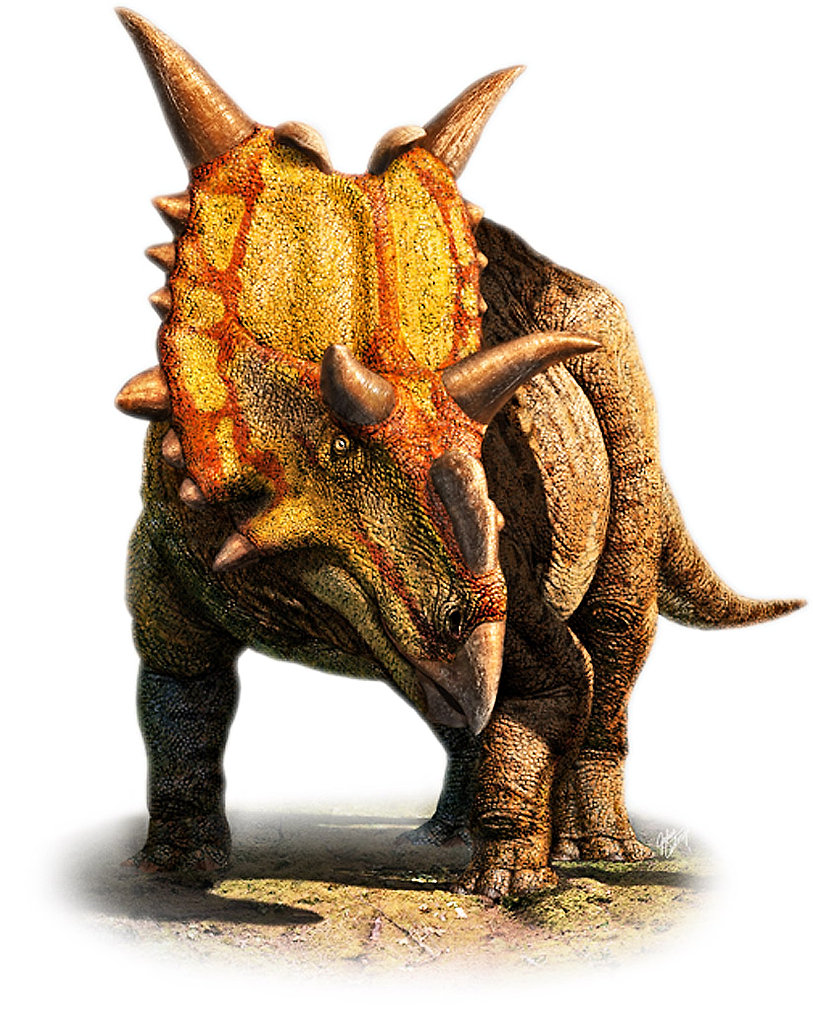Xenoceratops (meaning “strange horned face”) is a genus of herbivorous ceratopsid dinosaur that lived in what is now Alberta, Canada, during the Late Cretaceous Period, about 84 million years ago. Xenoceratops was a large dinosaur; the largest known specimen measuring 8.5 m (28 ft) long and weighing 4 metric tons (4.4 short tons). It had a short neck frill adorned with three horns: two above the eyes and one on the nose. The function of the frill remains unknown, but it may have been used for display or defense against predators.
Xenoceratops was discovered by Canadian paleontologist Charles M. Sternberg in May 1938, and was formally described by him in 1940. It was initially placed in its own family, Xenoceratopidae, but has since been reassigned to Ceratopidae. A second species, X. bonarelli, was named in 2009 based on fragmentary remains from Italy; this species has since been assigned to another genus, Machairoceratops.


